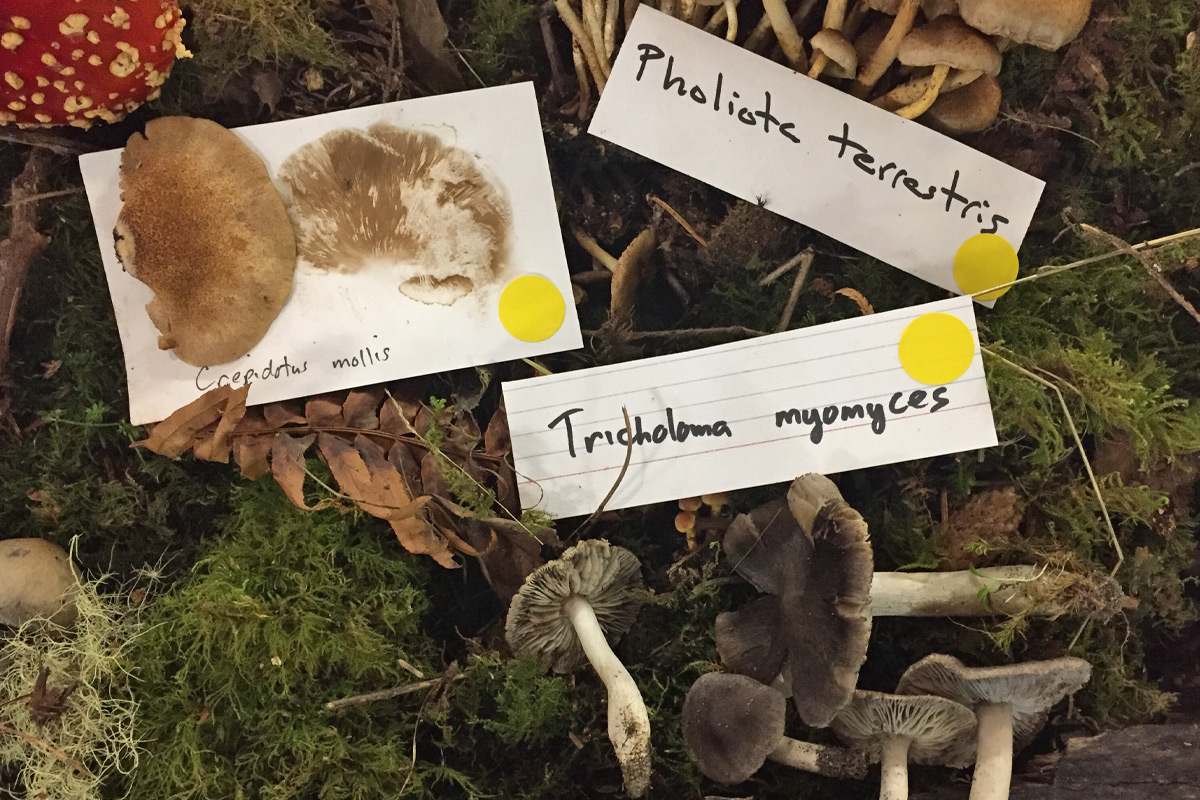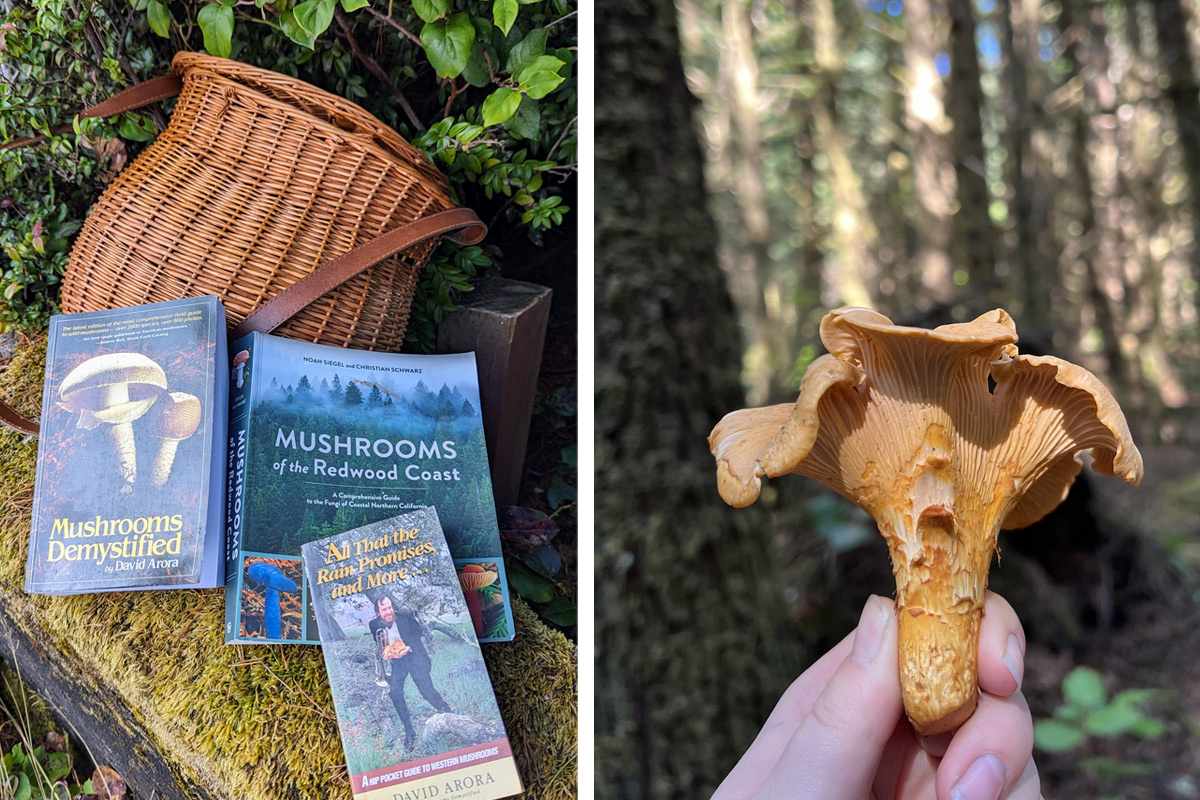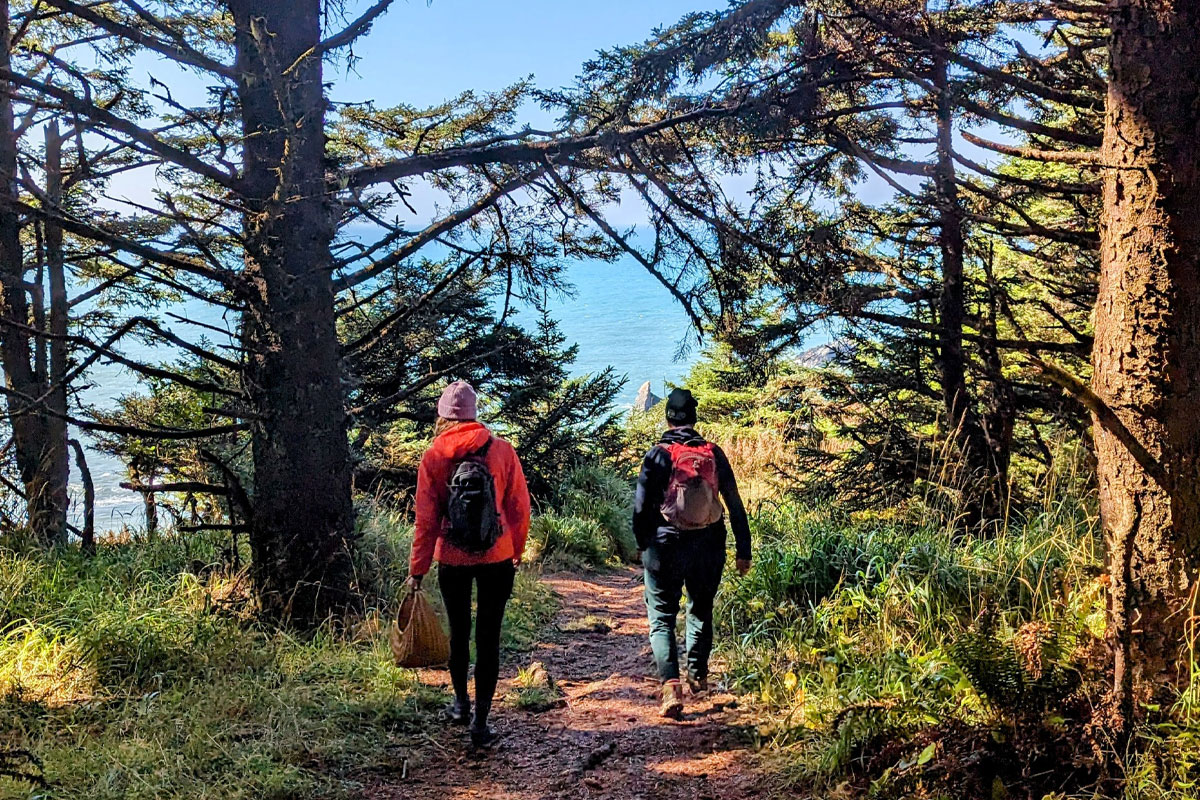Take advantage of the experts to learn about the wonders of wild mushrooms.
Lush temperate rainforests, sandy dunes and the misty, mountainous terrain of the Coast Range have long beckoned mushroom hunters to the Southern Oregon Coast — especially in the fall, when seasonal rains coax a wide variety of edible mushrooms through forest-floor duff.
But for beginners, foraging for wild mushrooms can be intimidating and possibly dangerous. Growing among the delicious chanterelles, porcini, lobster and hedgehog mushrooms are many toxic species, including look-alikes that can make you sick if you eat them.
That’s where the experts come in. The Southern Oregon Coast has excellent resources to help anyone who is willing to learn the basics of the wild world of foraging mushrooms. We tapped Kathleen Dickson, one of the founders of Brookings’ Wild Rivers Mushroom Club — and its affiliated Wild Rivers Mushroom Festival on November 9-10, 2024 — to share her top tips for beginners.

Learn From Experienced Foragers at a Festival, an Event or a Class
When Dickson and her husband moved to the Brookings area over 20 years ago, they spent their first winter living in a Forest Service-designated mushroom camp. There a group of commercial pickers patiently taught them how to identify the area’s edible mushrooms.
Building on that foundation, Dickson went on to work for a buyer, later sold mushrooms at the farmers market, and eventually helped form the Wild Rivers Mushroom Club to educate the public and encourage people to eat wild mushrooms.
“I’m not an expert or a mycologist. Everything I know, I learned by doing,” she says. “If there is a mushroom club in your area, join it. You’ll learn more from the people in those clubs than you will from reading books and watching YouTube.”
For residents and visitors alike, the friendly and welcoming club is a great resource on the South Coast that meets monthly from September through April, most of the mushroom season. The festival, its main event, features a huge display of wild mushrooms classified by experts. Visitors can attend lectures with some of the luminaries of the foraging world — all of whom love the South Coast as a mushroom paradise — and take guided mushroom-identification hikes into the woods.
Hands-on classes and expert-led hikes will further expand your knowledge. Southwestern Oregon Community College hosts a popular fungal ecology class, mixing class time with field work in either Port Orford or Brookings, and South Slough National Estuarine Research Reserve in Charleston also offers seasonal mushroom programs.

After Your First Guided Experiences
With a few guided experiences under your belt, invest in some reference books and field guides specifically for your area. For Oregon, Dickson singles out David Arora’s “All That the Rain Promises and More” as a personal favorite, and Christian Schwarz (one of the headliners at this year’s festival) has a new guidebook out with co-author Noah Siegel, “Mushrooms of Cascadia: A Comprehensive Guide to Fungi of the Pacific Northwest,” which promises to be an instant classic. The Oregon Mycological Society — also a great resource for mushroom foragers looking for community — lists several more guidebooks on its website.
To understand the ecosystems where fungi thrive, get acquainted with forests and trails. The Samuel H. Boardman State Scenic Corridor is a great place to start. Access any number of spots on the southern part of the Oregon Coast Trail — a well-canopied, mushroom-friendly environment. About 10 days after a good fall rain, you’ll likely find mushrooms popping, says Dickson.
Want to watch wildlife? Nearby Simpson Reef Overlook offers ADA-friendly parking spots and fully paved access to a viewpoint that’s among the best places on the South Coast to spot sea lions and migrating whales.

Safety Tips and Equipment
- Dickson’s No. 1 tip for foragers: Never eat a mushroom you can’t 100% identify.
- Take friends along and stick together. It’s easy to get turned around in the woods. If you decide to go alone, stick to well-traveled areas that you know, and tell someone where you are going.
- Be prepared. Pack the hiking ten essentials, including water and food, a map or GPS, a whistle and appropriate clothing. Wear bright colors during hunting season, and be mindful of underground yellowjacket nests that are very active in fall. A wide-brimmed hat not only protects against sun and rain, it also serves as a handy notification system that you are face-first in a large spiderweb.
- Stay on public land, and know the laws and best practices for sustainable harvesting, parking and off-leash pets. In some forests, permits may be required to pick all mushrooms or certain mushrooms, and pets may not be allowed in all areas.
- Be sure not to forget a pocketknife, basket or mesh bag, paintbrush to remove forest debris from mushrooms, and wax-paper bags for small samples.
Top photo by Greg Robeson / Travel Oregon